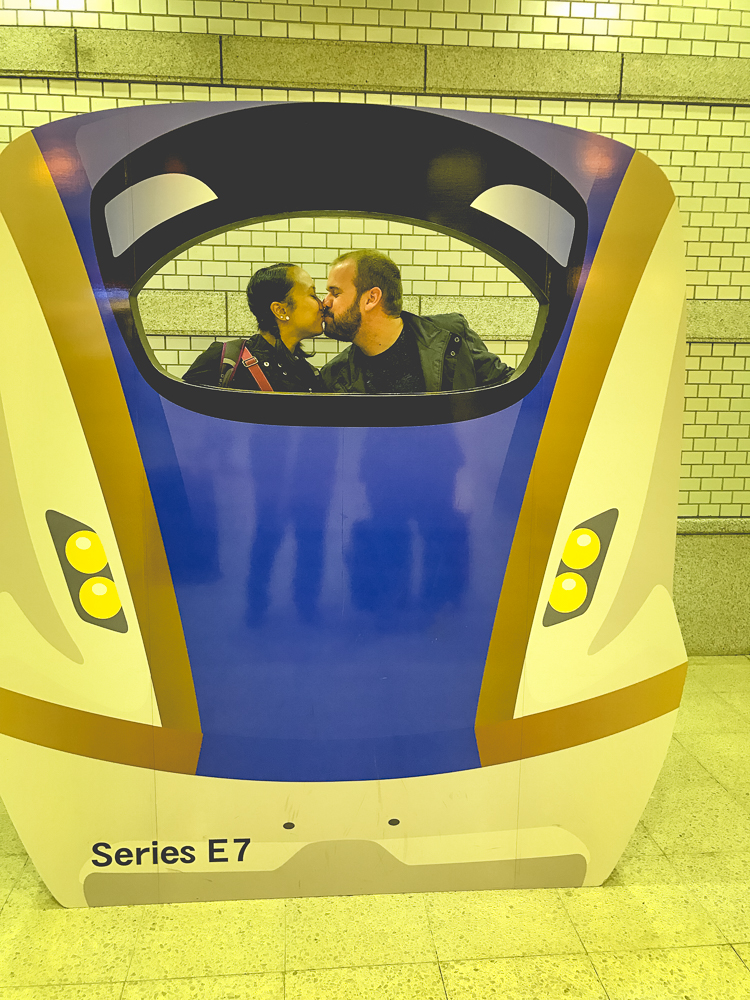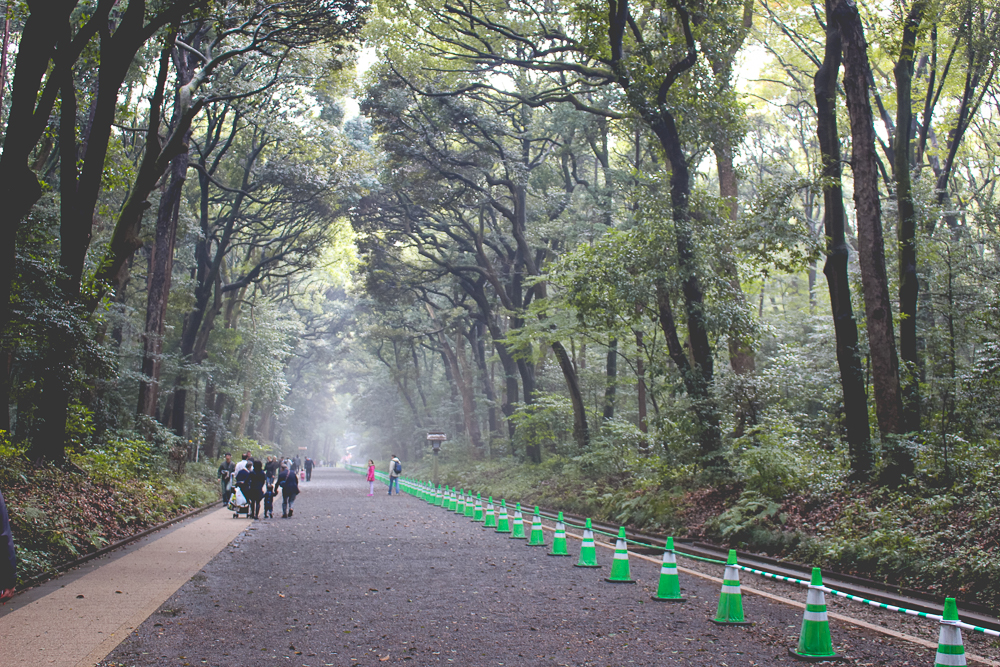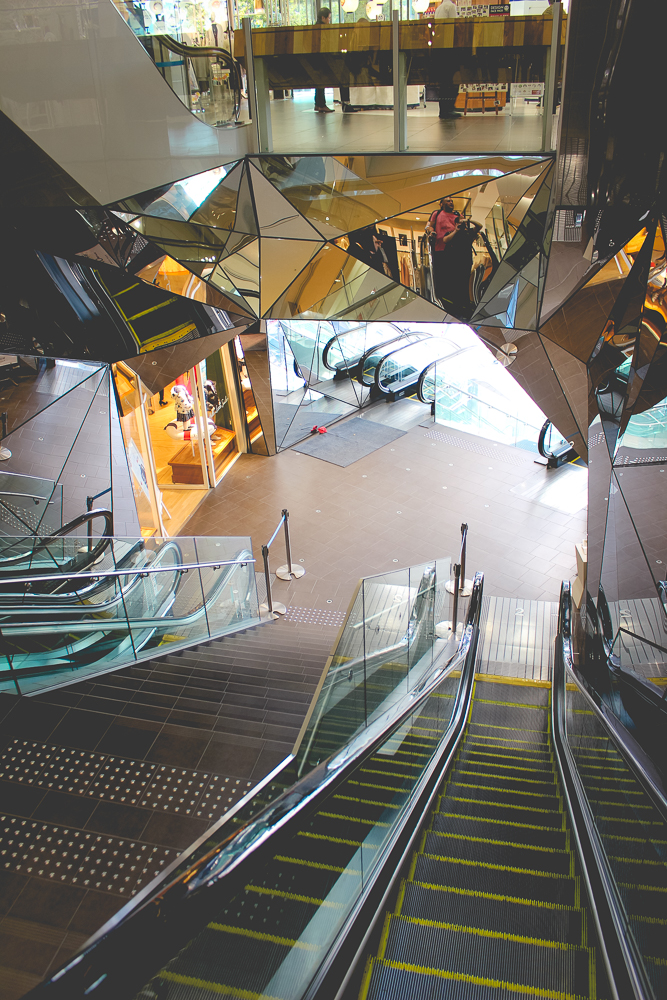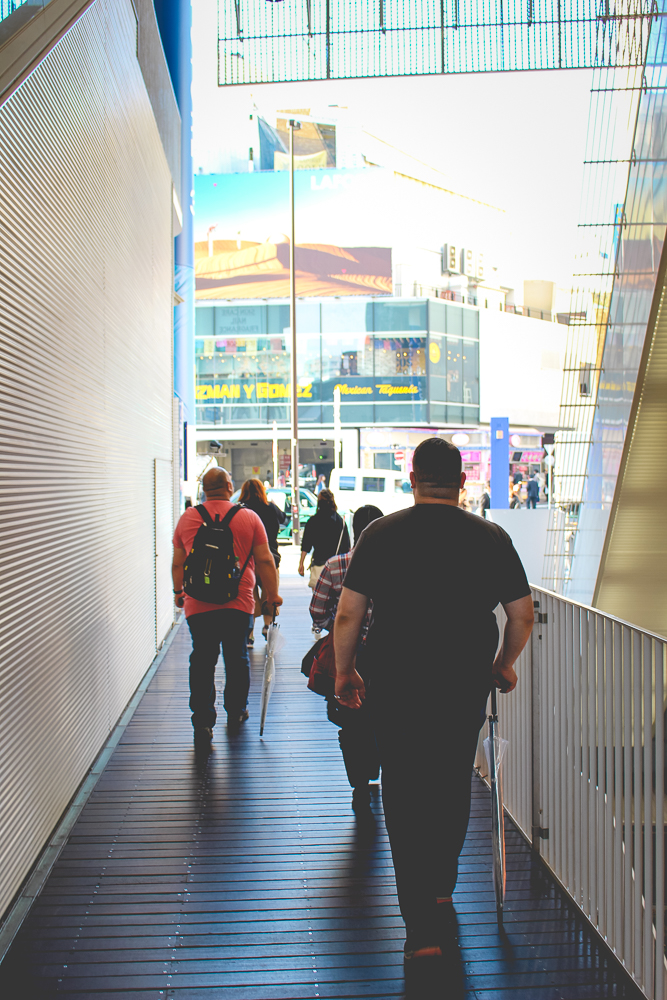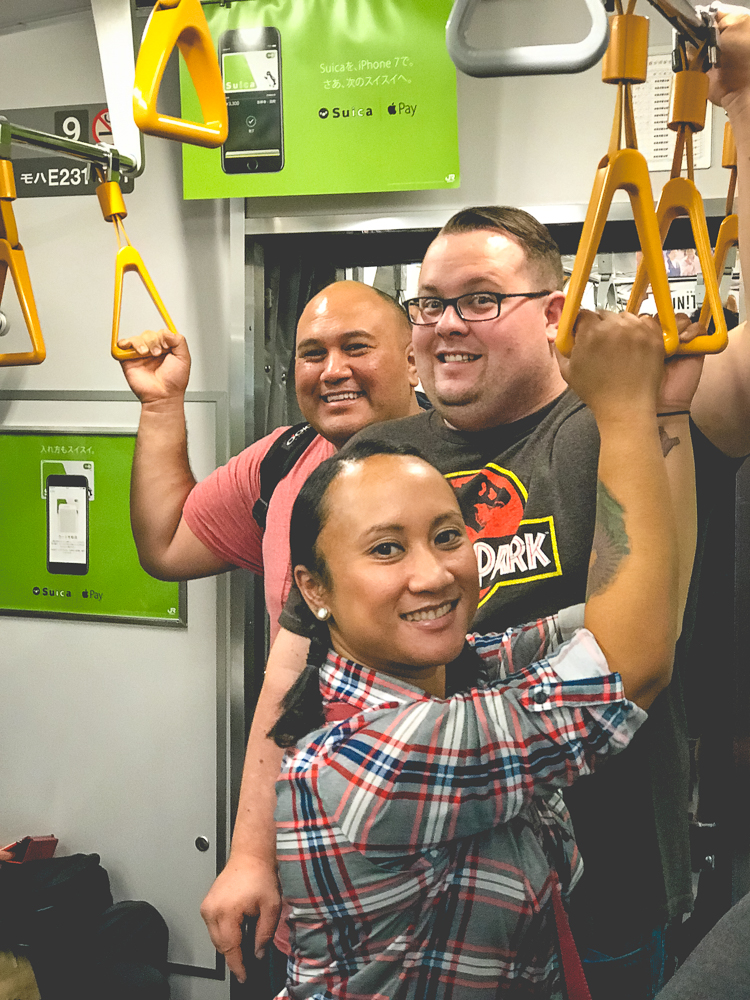In some capacity, I have been dreaming, scheming, and planning to visit Japan for at least 10 years now. The culture, the history, the climate, the theme parks (seriously), and my friends have all been motivators drawing me to a trip to this amazing country.
But it was just over a year ago that my wife Cindy and I got serious about it. We began discussing Japan with our great friends Chuck and Chris and the idea seemed to catch everyone’s fancy. The trip proposal was particularly well timed for Chuck and Chris, who would be wed in the spring and were searching for a honeymoon destination. Since the "us joining their honeymoon" idea seems to confuse/intrigue people, let's get this out of the way: Yes, we did go on their honeymoon with them. No, it was not strange. Yes, we had time to ourselves. No, we didn’t distract them from their time together—or at least we don’t think so!
What it did mean was that we were in wonderful company for our 11-day trip to Japan. During that time, we managed to visit four cities (and two theme parks) in a short, thorough manner. Additionally, we had more folks photographing, video recording, and type-recording their experience and impressions than ever before. It is for this reason that, to me, my posts on Japan feel more detailed than any previous blog—perhaps why I am giving each day in Tokyo it’s own post.
Before I jump in, I have to admit that if this post is about “Day 1” in Tokyo, then we all enjoyed a preceding “Day 0” at the Tokyo Disneyland Resort.
We all happen to be tremendous fans of Disney and of theme parks (this is no secret if you know us personally). The Tokyo Resort is something of a mecca among Disney parks fans because many consider it to be the best parks Disney has ever produced. It's the product of Disney design and operational philosophies, the Japanese culture of hospitality, and a seemingly limitless imagination for financial investment. The Tokyo Disneyland Resort is notable for being owned and operated by the Oriental Land Company which—chalk it up to culture, economics, or business philosophy—leads to a unique, high-quality theme park experience.
Anyway, on this “Day 0” (which happened to be Halloween), we visited the resort’s original park, Tokyo Disneyland. It was a perfect day and the experience, both familiar and unique, served as a perfect way to ease into the trip and into a new culture. I don’t blog about our theme park visits but if you're interested, you can check out a video about it. After our day in the park, we returned to our hotel rooms overlooking Tokyo Bay. Watching the lights of Tokyo reflecting just beyond, our excitement grew in anticipation of our first day in this dazzling city.
The next day we awoke, ready for a series of transfers that would take us into the heart of Tokyo. From the Tokyo Disneyland Resort’s monorail, we caught the Keiyo Line to the Tokyo Central Station. There, we exited and navigated a sprawling maze of tracks, shops, and restaurants before arriving at an Information Center to activate our Japan Rail Passes.
I realize that so far, I’ve only managed to drag you through layers of exposition (7 paragraphs in and we still haven’t stepped foot into Tokyo), but I want to take a moment to hype the Japan Rail Pass. The pass is a special train ticket, available only to foreigners, that provides unlimited access to the Japan Rail Company’s national train service. This includes everything from local lines, to high speed bullet-trains, and everything in between (including ferries and busses, in some places). Once exchanging your pre-purchased voucher for a pass, it's is amazingly easy to use—just present it to the manned station entryway in each station you visit and they simply let you in!
We each purchased a pass, originally unclear if it would be helpful to us. However, we ended up saving nearly $250—practically the price of the pass. Throw in the convenience factor and it was one of my favorite purchases of the trip.
Ok, enough hyping the damn pass!
With our Japan Rail Passes, we caught the Chuo line and cut right through the center of Tokyo to Shinjuku, the district we were staying in. We (finally) set foot in the city and walked around lost for about 10 minutes before getting our bearings and finding our hotel. We were jet lagged, sweaty, and exhausted from spending 2 hours booking it across Tokyo, so we decided to settle on a Starbucks for some rest and caffeine. There, Chuck had us try some of his favorite Japanese candies. Our response was positive, but we got distracted by...well, just watch the video; it will explain...
Now if you’re thinking, “All they’ve done is go to an American theme park and visit an American coffee shop!”—it’s totally true. But slow your roll, we’re getting to the good stuff!
Rejuvenated from our coffees and a bit of laughter, we hopped on the Yamanote Line for the Meiji Jingu. The Yamanote Line is a train line which loops around Tokyo, providing access to nearly every major neighborhood (hence why we wanted to stay next to it) but the Meiji Jingu was just one stop away.
The Meiji Jingu is a shine dedicated to the Emperor Meiji and his wife Empress Shōken. Emperor Meiji is credited for reconsolidating Japanese rule under the Emperor and transitioning Japan from a feudal state to a strong, capitalist, imperial nation—a period from 1868-1912 that carries his name, the Meiji Restoration. And so, he was built a super-massive, impressive shrine in the middle of Tokyo. We happened to visit the shrine on its 96th anniversary.
Surrounded by an urban, evergreen forest, we passed through the large, wooden torii gate marking the shrine's entrance. From there, we continued down a long, misty walkway that provided many opportunities for great photos.
Once we reached the center of the shrine, we passed barrels of wine and sake that had been donated and a small market selling flowers and bonsai scenes. When we finally reached the shrine’s main structure, nearly a mile from the train station, we were greeted by—well, by scaffolding. It was the first of many historical structures across the country that were under refurbishment, presumably in preparation for the 2020 Olympic Ceremonies.
Still, we explored the grounds and made an offering to the shrine. This earned us the opportunity to draw a small stick from a box and read a corresponding poem which suggested insight, advice, or fortunes from Emperor Meiji and Empress Shōken. For example, Cindy's poem is included, below:
“Such is the force of water
That it will with gentle pressure
Shape itself to every vessel
And yet pierce the very rock.”
So true, Emperor Meiji. So true.
With poems in hand, we headed for the southern exit of the shrine. After another half-mile of walking, we emerged from the forest and crossed the Yamanote tracks into a modern, commercial district: Harajuku.
The Harajuku District is known around the world as a hub of Japanese youth culture. The shopping ranges from small, independent boutiques to high-end designer storefronts. We walked into a few of the stores (like one with a cute Japanese bear character) and stayed away from others (like “Condomania + Fun Shop”). However quirky, the area was actually far more populated with (American) international chain stores than I expected. Stores like Apple, Nike, and even Ben and Jerry’s are dotted along the tree-lined Omotesando (sometimes referred to as Tokyo’s Champs Elysees).
We managed to get off of the main streets and wind our way through the back paths of the neighborhood. Eventually walking out of the business district, we found ourselves on residential streets, getting an awesome glimpse at life in this neighborhood. It reminded me a lot of San Fransisco or Santa Monica: small, dinky houses that happen to be in a good location that have been purchased and fixed up by clearly well-off (likely rich) people.
The area may have been hip but we were getting hungry. We started searching for a place to dine, literally walking into random buildings to see if a restaurant was nearby. Eventually realizing where we were, Chuck recommended a nearby Tonkatsu place that he recalled from a previous business trip to Tokyo. Tonkatsu is a pork cutlet that is breaded, deep-fried, and typically served with rice and cabbage. This restaurant (and many others, we would find) offered many different types and sizes of cutlet, ranging from $12 to $45 depending on the size and quality. We all ordered the same base/house cutlet and were blown away. It was so expertly fried that it was hardly oily, with a mildly sweet breading that paired wonderfully with the tangy sōsu, or tonkatsu sauce.
Sushi, teriyaki, and steakhouses are great, but why has this type of Japanese dish not yet become a big thing in America? It’s fried for crying out loud! We love fried food! In fact, eating in a country with smaller portion sizes and lighter ingredients, this was the first meal I ate that left me truly satisfied. Anyway, with full bellies, we happily rolled out of the restaurant, finding our way back to the Omotesando and towards the train station.
Along the way, we passed the trendy-looking Tokyo Plaza and saw a film shoot taking place with several women dressed as hyper-stylized geishas. We stopped to watch the action for a bit. The scene fit the aesthetic of the area: modern and inauthentically authentic.
After reaching the Harajuku train station (the namesake of the area and yet, ironically the oldest looking structure around), we made our way back to Shinjuku to check into our hotel and catch some rest. As I mentioned before, we were still highly jetlagged. We went down for a nap, a trend we’d keep up while in Tokyo, giving us the energy to go out for some night-time exploring!
A few hours later, we emerged into a night-fallen Tokyo in route to one of the city’s famous landmarks: The Shibuya Scramble. We took the Yamanote line south two stops to Shibuya and disembarked. Before reaching the scramble, we saw a queue of people waiting to grab their picture with a statue. Who could it be?
It's Hachikō!
If you don’t already know, Hachikō was famous for being a loyal pet. Dog of Hidesaburō Ueno, a professor at the University of Tokyo, Hachikō would go to Shibuya Station to greet the professor at the end of every day. One day, the professor passed away while at the University. Still, for almost a decade, Hachikō would return to Shibuya Station to await the professor’s arrival, an act of loyalty and fidelity similar to many other “loyal pet” stories (such as the Greyfriars Bobby, in Edinburgh). The statue commemorates the dog’s faithfulness and was celebrated by Japanese locals and international tourists alike.
After grabbing our Hachikō photos, it was time for the Scramble!
The Shibuya Scramble is like Times Square, plus the Abbey Road crossing, times five road directions, and squared by the immense numbers of Japanese commuters. As far as famous cross walks go, this one is high on the list and it is frequently used in movie and TV depictions of Tokyo, such as in the movie Lost in Translation. I kept feeling like it was silly to have travelled all this way to see a cross walk and yet, I was drawn in by how mesmerizing it looked when at capacity.
We crossed the street to catch a glimpse from an overlooking Starbucks. From there, we could be the shameless tourists we are.
We then left the Starbucks and chose to cross the Scramble a few times, taking selfies along the way. Again, even looking back at us taking pictures feels silly, but the effect was like being a pebble in a stream, or Simba in a stampede. #toosoon
I suppose it’s no different than when we took photos at Abbey Road in London, three years prior.
We left the Scramble and grabbed a quick bite for dinner. We had a pretty full and amazing first day in Tokyo and we knew the city would offer a lot more over the next two days. We returned to our hotel exhausted but ready for more.
Having Chuck record our trip on his GoPro ended up being one of the treats of the whole experience. To best experience the city as we did, check out the video recap, below:
If you have still made it this far and are looking for more from our day, feel free to click on the photos below:
















































